“Dad, I want the magic glasses!”
“Dad, I want the magic glasses!”
Late last year, my little son Santi (4) played VR Karts for the first time late and he was really fascinated. Although it took him two or three races to really get used to it, he quickly became an ace driver in this Virtual Reality game.
Very naturally, he took advantage of the freedom to rotate and move his head that the Oculus DK2 gave him, looking up and enjoying the sky while smashing the car into the trees. Nothing that bothered him too much, of course, because he was still very happy catching up to his competitors and managing to finish the race.
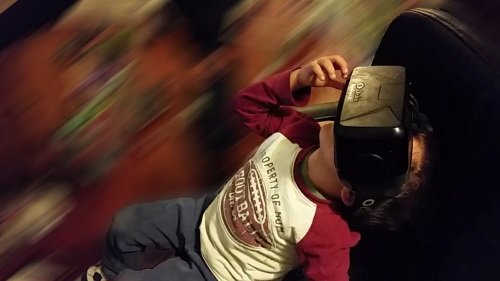
I’m not sure why I did this, but when he asked me what was the name of that black device that he had on this head that allowed him to enjoy something that special, I told him that they were the magic glasses. Since then, every weekend he wanted to repeat the experience of playing with the magic glasses and every time he enjoyed it as the very first time.
Clearly, I could see that Virtual Reality was working pretty well for him. But it’s not like that for everyone.
As I described in the previous article, not everyone has such good experiences with Virtual Reality; the technology has evolved a lot but it still has major challenges to solve.
What is the current status of Virtual Reality? How does its future look? Does Virtual Reality work?
Virtual Reality in 2016
Twenty years after the shy beginnings of the Virtual Boy, the scenario is completely different. Last March, after leading the expectations and development of this technology in recent years, the Oculus Rift was launched at a starting price of $600.
After their successful Kickstarter campaign two years ago, the company significantly improved its technology and pushed several other reputable companies to jump on the Virtual Reality boat. One of them was the giant Facebook, which decided to buy Oculus VR for the not inconsiderable sum of two billion dollars. Not bad at all, especially for a technology that twenty years ago failed so miserably.

Another strong competitor that hit the market is the HTC Vive, also launched in recent weeks at a starting price of $800. The Vive was developed by HTC and the videogame company Valve (the owners of Steam), another giant who believed in the Virtual Reality promise and decided to join the party.
The Oculus Rift and the HTC Vive are direct competitors in this new market of VR devices, as they are technically very similar. Both deliver quite comparable quality image, both feature user’s head tracking, and both require a high-end PC to run, especially on the GPU / video card.
Although the price of HTC Vive is 30% higher than the Oculus Rift, the Vive has two advantages that largely compensate the extra cost. The first advantage is that the purchase also includes a pair of microphone sized rods that are used to track the position and orientation of the user’s hands. They also include buttons and sensors that detect pressure and grip.
The second advantage is that the system is shipped with sensors that allow the user to play games standing up and to move in a range of around 3 by 3 meters, the size of a small room. Both features, together, substantially improve the user immersion by allowing you to move more freely and interact more naturally with the virtual world.
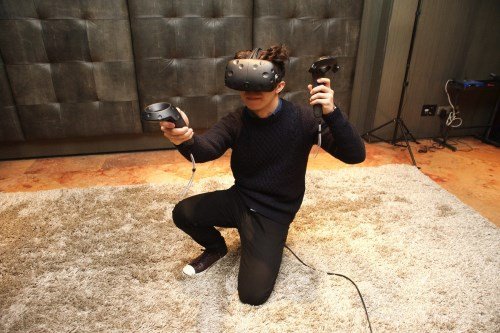
The third competitor that could also be considered to compete in the same high-end line has not yet been launched: the PlayStation VR by the Japanese giant Sony. Announced for October this year at a starting price of $400, the device is the only one that will work with a console, the PlayStation 4 in this case.
It is worth mentioning that the price is slightly misleading, because to be truly functional the user will also need to purchase a PlayStation Camera which costs around $50 more. But still, it has the advantage of working with a console that costs less than $500 instead of requiring a high-end PC that can cost $1500 or more.
Also, being a console, there won’t be any installation or driver configuration steps, like the ones that Oculus and Vive have. The promise of the PlayStation VR is that it will work as soon as it is connected, and it will cost half the price than their competitors. If they deliver what they have promised, it will be an attractive choice for sure.
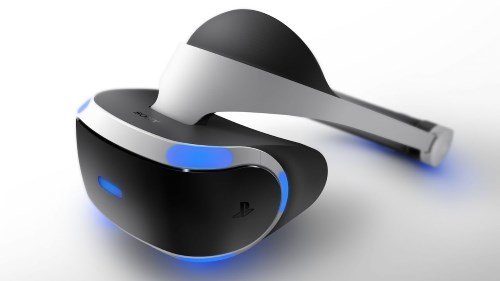
Virtual Reality and mobile devices
Last year, Google launched the Google Cardboard, an extremely cheap alternative that allows people to try a simpler Virtual Reality experience. It works by introducing an Android mobile device (ideally a mid-high end device) into a cardboard box. This box includes a pair of optical lenses to distort the image of the mobile device and get the VR immersion effect working.
Although the experience is not comparable with the fidelity of Oculus Rift, HTC Live or PlayStation VR, as it does not feature head tracking and the picture quality is much worse, it still allows the user to have a first approach to Virtual Reality at an almost negligible cost.

In the same vein, late last year Samsung launched the Gear VR which requires certain specific models to work, all high-end (like the Samsung Galaxy S6, Galaxy S7, and the Galaxy Note 4), besides having a more expensive price point of $100.
But unlike the Google device, the experience is much more solid as the Gear VR includes high precision motion sensors and it also takes advantage of the significantly better processing power of the high-end mobile devices. It’s also worth noting that the Gear VR was developed in conjunction with Oculus, so it benefits from all the experience of this company in the field of Virtual Reality.
Oculus, Facebook, Valve, HTC, Sony, Google, Samsung and many others. Many of the big players in the global technology industry decided to get into the Virtual Reality market.
Does this technology work that well? Is it worth investing billions of dollars?
Does Virtual Reality work?
To be honest, the first time I heard about the Oculus and that how Virtual Reality was going to become the “next big thing”, I did not believe it. Despite how cool it looked, I did not participate in their crowdfunding campaign (and I should admit that now I regret such decision), and I was not excited at all about trying the technology.
I was not the only one to think like that. Until today, many people still believe and claim that virtual reality buzz will be short and that the technolgy will fail very soon; they compare it with the 3D television, which I was also not excited at all and, in fact, it was more about the buzz than the actual commercial success (well, even if I would have been excited, it was impossible for me to enjoy 3d TV because I have strabismus and amblyopia, i.e., I don’t have stereo vision; hence, 3D technology does not work with my eyes).
Currently, virtual reality technology presents several technical challenges that have not yet been resolved. It’s true that “tricking” the senses is one of its main features to achieve an incredible level of immersion, this is also one of its main weaknesses. This is because our brain receives some information from some senses that is in contradiction with the input received with other senses.
The clearest example is the user translation and rotation issues. When the virtual character or camera moves or rotates, but the user is not actually moving or turning, many people suffer serious dizziness. This is due to the fact that the brain receives images showing that the user is moving, while the body does not “feel” that movement, generating a contradiction that causes dizziness. Not everybody is affected the same way, but the vast majority of people is somehow affected.
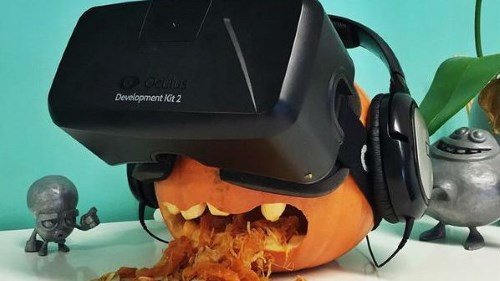
Another problem of the current technology has to do with optics and how the devices generate the illusion of 3D content through the lenses. Without going into technical details, the headsets trick the brain by showing the eyes images that simulate what each eye should really see if the objects had real volume and they were actually in front of the user.
However, while the brain perceives things that are at different distances in front of the player, the eye must focus on two small screens that are physically at a very short distance, on the headset. This contradiction generates eyestrain and even some headaches to some people, just as 3D TV technology.
And finally, and probably the most difficult challenge: it is very difficult for the brain to feel 100% immersed in an experience if the user can not touch, smell and feel the world that he is watching and listening.
For example, being in a prehistoric virtual world, supposedly surrounded by dinosaurs, but without feeling the cold of the jungle, or the smell of the plants around, or the wind in the face, and not being able to touch and feel the soil, makes it impossible to actually feel 100% in that world.

There are many millions of dollars invested and there is a lot of very intelligent and capable people who are currently seeking solutions to the aforementioned challenges (and also to other issues, such as the devices cost). Therefore, it is very likely that the technology will have a significant progress in the next few years.
Virtual Reality is Fascinating
Despite the little faith I had on the technology and the challenges it still has, I must admit that trying Virtual Reality is amazingly fascinating.
Two years ago I had the chance to try the Oculus DK2 for the first time (the second development version of Oculus) and late last year a colleague lent me his own device so I could have it at home for a few months (thank you a lot Eduardo!). My skepticism quickly vanished, for several reasons.
First, because despite the potential dizziness and the discomfort of having something heavy and uncomfortable in the head, the experience of being able to move and turn your head and really feel that you are looking into a virtual world is truly remarkable. In addition, each person learns quickly what types of experiences and movements will cause them dizziness or headaches, so they can avoid them.

Second, because along with the development of the devices themselves, there is a lot of research and development of devices and accessories that complement the experience, to make it more immersive and compelling.
For example, recently I learned about (and immediately bought) the Leap Motion, a device that detects your hands and fingers and that is currently working hard to complement Virtual Reality experiences so that the user can control objects with their hands, without gamepads or any other devices. I can confirm that it works and, although it is not perfect yet, the feeling of immersion improves tremendously.
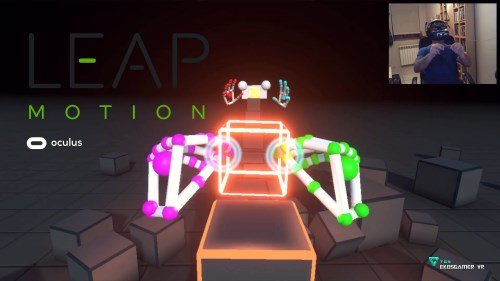
Third, because the potential of the VR experiences is remarkable. It is true that you can hear and read a lot about Virtual Reality, but the truth is that you can’t really imagine how deep and different it feels until you actually experience it.
Climb, for instance, is one of the most remarkable VR experiences I’ve tried, because of the graphical fidelity an also because of the real feeling of vertigo caused by scaling a cliff while being surrounded by prehistoric birds.

Fourth, because not only the hardware manufacturers have got into the VR train, but also the main content tools developers such as Unity, Unreal and Crytek. They did not only add support to generate VR compatible content on their tools. In most cases, they integrated native support for the most popular devices within the tool themselves.
Unreal went a step further and added to its Unreal Engine content editor the ability to edit scenarios in Virtual Reality mode. That is, the level designer can “get into” the videogame world and add, move or remove objects and scenario sections around him. Magnificent, really magnificent.
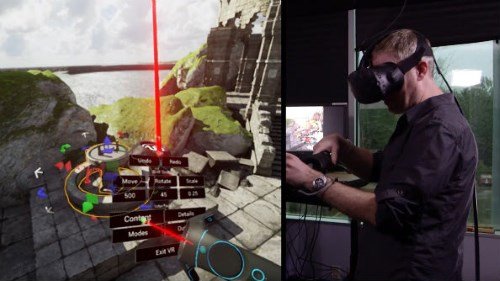
And finally, and most importantly, because I shared the experience with my family, especially my children, and I witnessed how natural was the experience for them, and how much they enjoyed it. Santi, for example, had a lot of fun racing in VR Karts and playing with the blocks in Blocks, where even his small hands were correctly tracked by the Leap Motion accessory.
The technology is still far from being perfect, that’s super clear. But they are (our children and grandchildren) the ones that will enjoy the maturity of this technology, after two or three generations of devices.
Maybe in about ten or fifteen years, for both Santi and Diego “the magic glasses” will be just another common accessory in their life.
What do you think? Have you tried Virtual Reality? Have you shared the experience with your family, with your children? Do you think that the current challenges of this technology will be somehow resolved?
Juan Pablo makes videogames since he was 8 and he is a father since 2004. Today, he has three children and he has worked in more than 20 videogames. He got interested on how paternity and the videogame industry are related and he decided to write about it, founding "Papa Game Dev".
Leave a Comment
Your email address will not be published. Required fields are marked *

